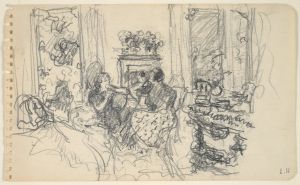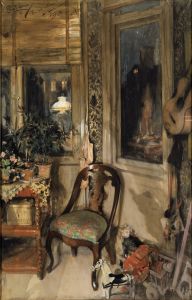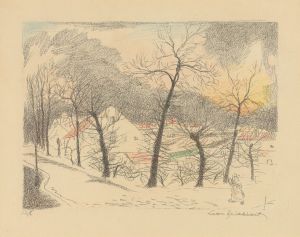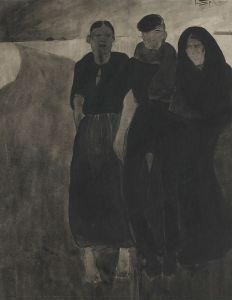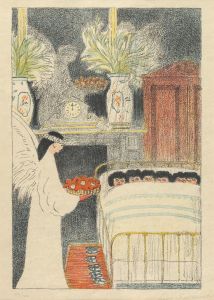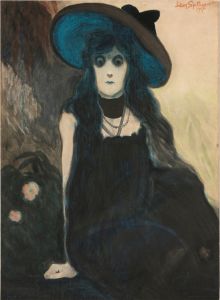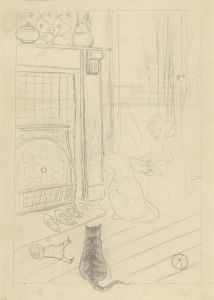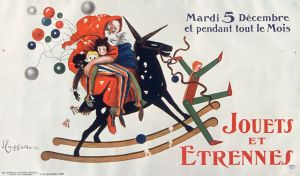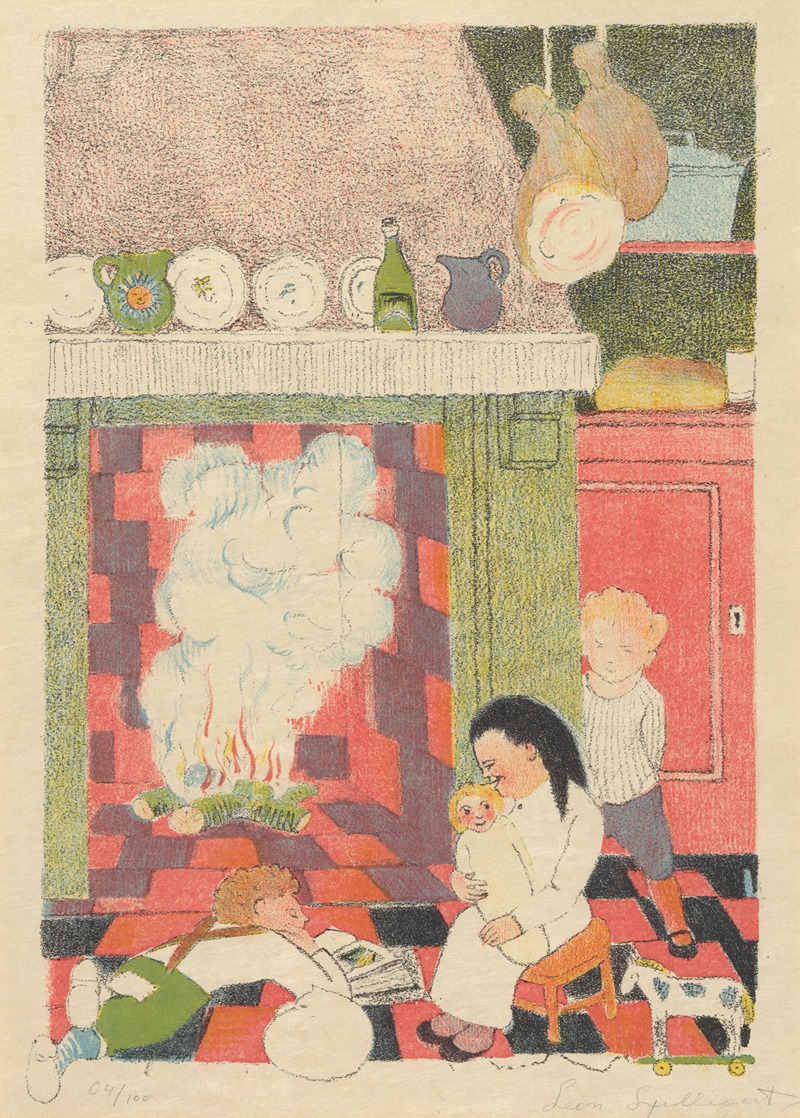
Les enfants pauvres devant l’âtre avec leurs jouets de la Saint-Nicolas
A hand-painted replica of Léon Spilliaert’s masterpiece Les enfants pauvres devant l’âtre avec leurs jouets de la Saint-Nicolas, meticulously crafted by professional artists to capture the true essence of the original. Each piece is created with museum-quality canvas and rare mineral pigments, carefully painted by experienced artists with delicate brushstrokes and rich, layered colors to perfectly recreate the texture of the original artwork. Unlike machine-printed reproductions, this hand-painted version brings the painting to life, infused with the artist’s emotions and skill in every stroke. Whether for personal collection or home decoration, it instantly elevates the artistic atmosphere of any space.
Léon Spilliaert's painting "Les enfants pauvres devant l’âtre avec leurs jouets de la Saint-Nicolas" is a notable work by the Belgian symbolist artist, known for his unique style that often combines elements of symbolism and expressionism. Spilliaert, born in Ostend, Belgium, in 1881, is recognized for his introspective and often somber works, which frequently explore themes of solitude and existential reflection.
This particular painting, whose title translates to "Poor Children in Front of the Hearth with Their Saint Nicholas Toys," captures a poignant scene that reflects both the innocence and the hardships of childhood. The painting is set during the celebration of Saint Nicholas Day, a festive occasion in many European countries, particularly in Belgium, where children traditionally receive gifts and sweets. The choice of subject matter highlights the contrast between the joyous occasion and the socioeconomic realities faced by the children depicted.
Spilliaert's use of color and composition in this work is characteristic of his style. He often employed a muted palette, which can be seen in the subdued tones of the painting, creating a melancholic atmosphere. The figures of the children are rendered with a delicate sensitivity, emphasizing their vulnerability and the simplicity of their joy despite their impoverished circumstances. The hearth, a central element in the composition, symbolizes warmth and comfort, yet its presence also underscores the starkness of the children's environment.
The painting reflects Spilliaert's broader artistic concerns with mood and emotion, often conveyed through his distinctive use of light and shadow. His works frequently explore the interplay between interior and exterior spaces, both physically and psychologically. In "Les enfants pauvres devant l’âtre avec leurs jouets de la Saint-Nicolas," the interior setting serves as a microcosm of the children's world, encapsulating both the warmth of familial bonds and the coldness of economic deprivation.
Spilliaert's work is often associated with the symbolist movement, which sought to express the emotional and spiritual experiences of the artist. His paintings are known for their introspective quality, often reflecting his own contemplative nature and philosophical inquiries. This painting is no exception, as it invites viewers to reflect on themes of poverty, childhood, and the fleeting nature of happiness.
Throughout his career, Spilliaert was influenced by a range of artistic movements and figures, including the works of Edvard Munch and James Ensor, as well as the literary influences of writers like Edgar Allan Poe and Maurice Maeterlinck. These influences are evident in the atmospheric and often haunting quality of his paintings.
"Les enfants pauvres devant l’âtre avec leurs jouets de la Saint-Nicolas" stands as a testament to Spilliaert's ability to convey deep emotional resonance through his art. It remains a significant piece within his oeuvre, illustrating his skill in capturing the complexities of human experience through a seemingly simple scene. Spilliaert's legacy as a master of mood and emotion continues to be celebrated, and his works are held in high regard in collections and exhibitions worldwide.






